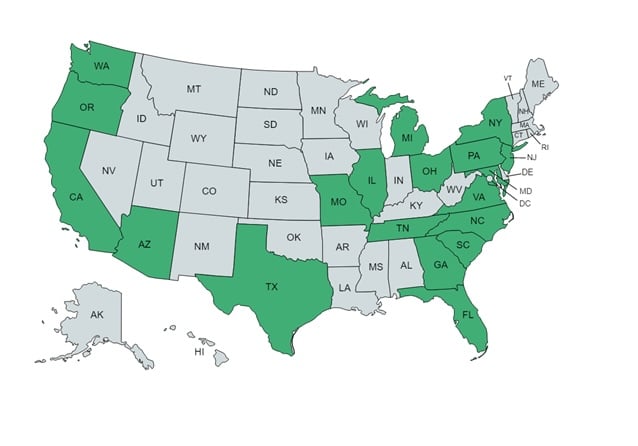During the week of June 23rd, Michigan Tech proudly welcomed 23 high school students from across the nation—from Texas to Alaska and Massachusetts to California—for the Tracks to the Future Summer Youth Program. The program is generously Sponsored by the Federal Railroad Administration’s Consolidated Rail Infrastructure and Safety Improvements (CRISI) grant, and it offers students a unique opportunity to gain firsthand insights into the rail industry.
The first two days were filled with engaging on-campus activities, where students participated in hands-on learning experiences and interactive presentations. They simulated railroad operations, constructed scaled models of railroad tracks, explored the efficiencies of intermodal transportation, and discovered the advantages of railroads in long-haul, high-weight applications.
Following these enriching sessions, students embarked on a two-day field trip to Superior, Wisconsin, and Duluth, Minnesota. Their first stop was the BNSF Superior terminal, where they toured the mechanical shop, climbed aboard various locomotives, and received an overview of terminal operations. This visit was particularly special as it brought together three generations of Tracks to the Future participants: Nicholas Stamper, a 2014 alum and currently the BNSF Terminal Trainmaster, Claire Steigelman, an MTU instructor and 2022 alumna, and the current group of 23 students.
Next, students visited Duluth Cargo Connect facilities, where they observed the seamless flow of goods through multiple transportation modes, including rail, ship, and truck. They were then hosted by Halvor Lines, where they learned about the trucking industry’s vital role in complementing rail transport and delivering goods to consumers.
On the final day of field visits, students explored the BNSF Allouez Taconite facility, witnessing the heaviest trains in the BNSF system. They learned how raw ore is mined, loaded onto trains, and transported via conveyors to ships, ultimately reaching mills for steel production. The day concluded with an exciting train ride aboard the Wisconsin Great Northern Railroad in Trego, WI.
To conclude the week, students immersed themselves in local rail history at the Quincy Mine in Hancock, MI, where they learned how the rail system was essential for transporting raw copper ore to nearby mills. They had the chance to climb aboard a vintage steam locomotive, ride the cog railway, and operate a mine handcart, deepening their appreciation for the historical significance of rail transport.
Their journey continued at the Houghton County Historical Society, where they enjoyed a short train ride, marveled at a detailed model railroad display, and even operated a small gasoline-powered locomotive. After the program, one student remarked, “I feel like the Tracks to the Future program has really fueled my interest in STEM and various types of engineering,” while another stated, “The camp definitely made me more inclined to pursue an engineering career in the rail industry.” Michigan Tech extends its gratitude to BNSF Railway, Duluth Cargo Connect, Halvor Lines, Wisconsin Great Northern Railroad, the University of Wisconsin-Superior, Quincy Mine, and the Houghton County Historical Society for their generous support during the field visits, as well as to the Federal Railroad Administration for their ongoing funding of this impactful program which is dedicated to developing the next generation of leaders in the rail industry.
